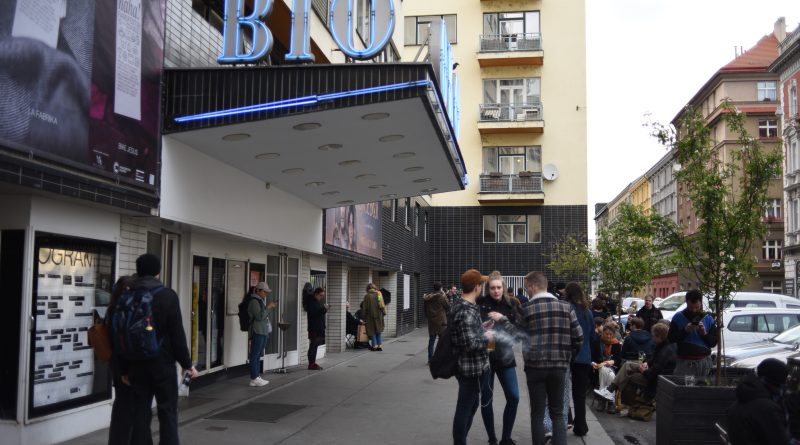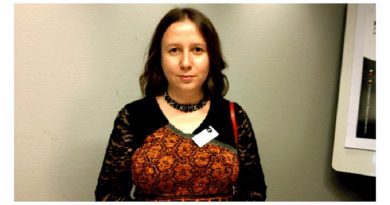Filmland: The Czech Republic is known for attracting foreign film productions, but their own domestic film scene is captivating too
Johanna Maj Varming –
The Danish film industry is an example for the Czech films of how film can flourish even in a small market.
In a movie theater in Prague mostly Czech students are filling up the seats for the screening of Icelandic director Hlynor Pálmasons film “Godland”.
The film that premiered last year stars among others Elliott Crosset Hove (Winter Brothers, Journal 64, The Bridge), Ingvar Eggert Sigurðsson (Angels of The Universe, Trapped, A White, White Day) and Jacob Hauberg Lohmann (Shorta, Riders of Justice, Those Who Kill) in the film about a young Danish priest that that in the late 19th century travels to Iceland to build a church.
The event this evening is sold out and the screening is followed by a Q&A session with the director himself as part of FAMUFEST – a festival arranged by the students of FAMU Film school in Prague. While the festival invites guests like Hlynor Pálmason, who has also been doing master classes with the students doing the festival, the main goal of the festival is for visitors to be able to see the work of the FAMU students.
“The main purpose is to screen Famufilm to the public. It is an unique opportunity to see your film on a screen in front of a big audience,” says Jan Čadek, second year student at the production department of FAMU and part of organizing FAMUFEST.
The students are the new talents who will be part of creating the future of Czech cinema. A film industry with a long history very different from the Danish. A film industry that in recent decades has experienced a boom in international production. But also a film industry with a blossoming production of original Czech films winning more awards.
A very different film history
The history of film history in the Czech Republic dates back more than a century. After WWI Prague became the regional center for American distribution and in 1931 Barrandov Studios was established, which attracted even more foreign productions.
The Nazis however took over Barrandov during WWII and after them the Soviets, who used it to shoot propaganda. In 1960s foreign production was accepted again, while the Czech film industry experienced the so called Czech New Wave with two domestic film winning Academy Awards: The Shop on Main Street (1965) by Ján Kadár and Elmar Klos and Closely Watched Trains (1966) directed by Jiří Menzel.
The fall of the Iron Curtain brought with it a total transformation.
“We experienced a total change in the system in 1989. The history here is very different from Denmark,” says Pavel Strnad, producer and co-founder of Prague based Negativ and previous chairman of APA, the Czech film producers’ association of which he is now on the board.
He started studying in 1993 and thus was not part of the industry doing the first years of the transformation. He joined APA in 1999.
After 1989 the country’s borders opened and in 1992 the state monopoly on film production ended. It took years to build up the film industry to both serve a foreign industry and a production of original Czech films.
“I think the Czech film industry is quite strong today. Of course, I would be happy if there were even more support for original Czech films,” says Pavel Strnad.
Today the Czech Republic is a hotspot in Europe for foreign production and many films have been made or partly filmed here including Danish films such as “1864” and “The Shamer’s Daughter”. In the Czech Republic the film productions can get a cash rebate. This is practiced by other countries in Europe as well, but not in Denmark, which previously this year was criticized by Danish producers and filmmakers in Politiken.
Small nations, global cinema
While the history is very different, Czech and Danish Cinema have small markets in common. There are 10,5 million people living in the Czech Republic. In Denmark there are 5.8 million. Despite small language groups and economies, film industries can grow and become a success worldwide.
While the success of the Danish Cinema has been going up and down historically, it remains highly respected internationally.
“I don’t really have to mention the success of the Danish film scene. I am personally a big fan of Lars von Trier of course,” says Pavel Strnad.
An obvious example of the success is Thomas Vinterberg who won the Oscar for Best International Feature in 2021. Thomas Vinterberg who on another note just ended filming his new tv-series “Families Like Ours” in – you can probably guess where – Prague of course.
Funding by the state supports the production of film in Denmark, as well as in the Czech Republic.
“The Danish system with state-funding has been a great example for us of how film can flourish even in a small market. Denmark has half the population of the Czech Republic,” says Pavel Strnad.
The Future at FAMUFEST
FAMUFEST last year invited guests from the French film school. This year they have invited students from The National Film School of Denmark.
“This year’s theme is “nude!” and we were looking for guests from the Nordic cinema, because it has a very intimate style of portraying characters,” says Jan Čadek, student at FAMU.
Jan Cadek contacted danish Louise Højgaard Johansen, who has been freelancing for the festival. She helped the students get in contact with the film director Hlynor Pálmason, this evening culminating in the screening of his latest movie followed by a Q&A session that is highly popular among the students.
Arranging FAMUFEST is mandatory for the students. While it is also about screening the students‘ own movies to the public, arranging the festival is part of preparing the students for the industry.
“It is mandatory for us, but at the same time is a unique opportunity for us to try and organize a big festival with a jury and guests. It is important for us to organize it well,“ says Jan Čadek.
10 Czech films to watch
- Invention for Destruction. Original title: Vynález zkázy (1958) by Karel Zeman
- A Blonde in Love. Original title: Lásky jedné plavovlásky (1965) by Miloš Forman
- The Cremator. Original title: Spalovač mrtvol (1968) by Juraj Herz
- Larks on a String. Original title: Skřivánci na niti (1969) by Jiří Menzel
- Daisies. Original title: Sedmikrásky (1966) by Věra Chytilová
- Return of the Idiot. Original title: Návrat idiota (1999) by Saša Gedeon
- Faust. Original title: Lekce Faust (1994) by Jan Švankmajer
- The Ride. Original title: Jízda (1994) by Jan Svěrák
- Something Like Happiness. Original title: Štěstí (2005) by Bohdan Sláma
- Burning Bush. Original title: Hořící keř (2013) by Agnieszka Holland
The films were chosen by producer Pavel Strnad. The films were chosen to include both new and older original Czech films. The list only includes fiction. With documentaries and animation, the list would have been much longer.
Photos and text by Johanna Maj Varming
The article was written in the course Foreign Correspondence under the supervision of doc. PhDr. Alice Němcová Tejkalová.




